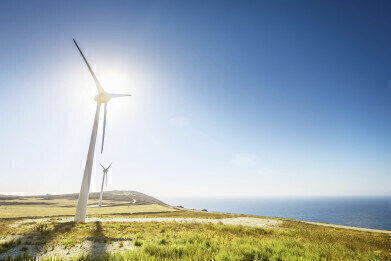Green energy
A Catalyst That Uses the Sun to Turn Carbon Dioxide (CO2) into Synthetic Natural Gas is Making Carbon Neutral Fuel a Viable Option.
Jun 28 2017
Researchers from the University of Adelaide in South Australia in collaboration with the Commonwealth Scientific and Industrial Research Organisation (CSIRO) have developed a technique of combining CO2 with hydrogen to produce almost pure methane.
Combining hydrogen with CO2 to produce methane is considered a safer option than using hydrogen directly as an energy source and allows the use of existing natural gas infrastructure.
With previous catalysts there have been issues with poor CO2 conversion, unwanted carbon-monoxide production, catalyst stability, low methane production rates and high reaction temperatures.
Using a catalyst synthesised with porous crystals called metal-organic frameworks, researchers were able to minimise carbon-monoxide production.
The research has been published online ahead of print in the Journal of Materials Chemistry A.
Lead author Renata Lippi said the process only required a small amount of the catalyst, which increased its economic viability.
“Natural gas is already in use but it is a fossil fuel and is one of the main fuels used in many industrial activities,” she said.
“The problem with that is we are getting carbon stored underground but with this synthesis, organic CO2 in a gas form and reacting with hydrogen, we can make synthetic natural gas without adding carbon dioxide to the atmosphere. We would be recycling.
“We use a really high flow of gas and still we reach almost full conversion of the reagents.”
Lippi said hydrogen could be efficiently produced with solar energy and combining it with CO2 to produce methane was a safer option than using hydrogen directly.
The process proved to be highly stable even under high continuous reaction for several days and after shutdown and exposure to air.
The catalyst also operated at mild temperatures and low pressures, making solar thermal energy possible.
Lippi said the next step was improving methods for CO2 capture and developing a hydrogen electrolysis method so the whole process could be integrated into the same plant.
According to BP, global gas production was 3551.6 billion cubic metres in 2016.
With the large global push for more renewable energy and the existing infrastructure for natural gas, there is huge potential for effective use of this new technique.
“What we’ve produced is a highly active, highly selective (Producing almost pure methane without side products) and stable catalyst that will run on solar energy,” said project leader Christian Doonan.
“This makes carbon neutral fuel from CO2 a viable option.”
South Australia’s capital Adelaide has three long-standing public universities, Flinders University, University of South Australia and the University of Adelaide, each of which are consistently rated highly in the international higher education rankings.
Events
May 18 2025 Algiers, Algeria
23rd International Water Management Exhibition
May 20 2025 Prague, Czech Republic
Jun 17 2025 Guangzhou, China
Singapore International Water Week Spotlight 2025
Jun 23 2025 Singapore
Jun 25 2025 Sao Paulo, Brasil














